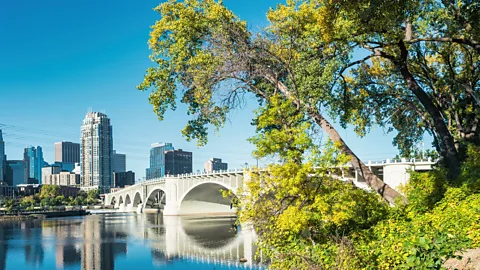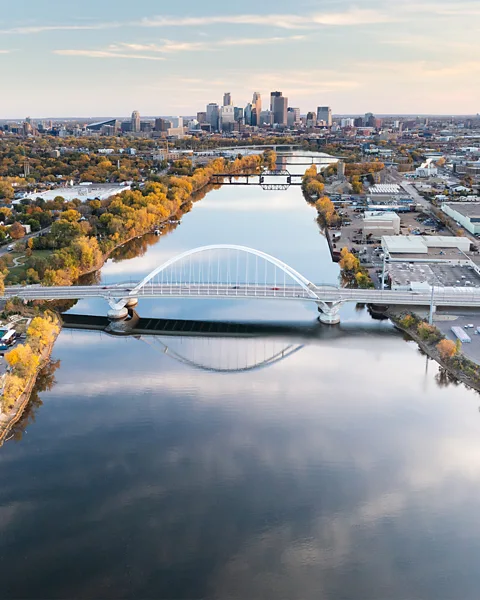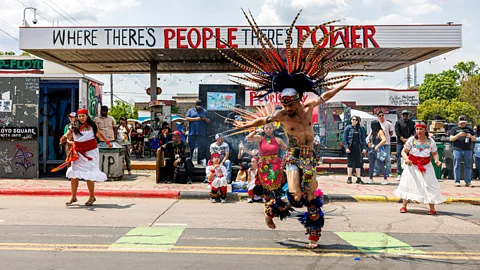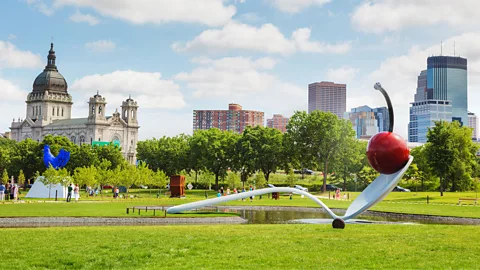Why Minneapolis is one of the world's happiest places
 Getty Images
Getty ImagesMinneapolis ranked among the world's happiest cities for 2025. Locals say the secret lies in its Nordic roots, creative energy and community spirit that bring all-season joy.
When it comes to measuring the happiest places in the world, the Nordic countries often come out on top. That was certainly the case in this year's 2025 Happy Cities Index, conducted by the Institute for the Quality of Life, where Denmark, Norway, Finland and Sweden all had at least one city rank in the top-marked "Gold" category. So perhaps it's no surprise that Minneapolis – the only US city aside from New York City to earn a Gold happiest city designation – has its own ties back to Scandinavia.
Home to the largest population of Norwegians, Finns and Swedes outside of Europe, Minnesota and its largest city Minneapolis still maintain strong ties to their early settlers who came to the United States in the mid-19th Century, fleeing religious persecution and famine. With its long, cold winters and abundant lakes, Minneapolis's climate and landscape certainly can resemble its Nordic counterparts. In the same vein, its residents have long learned to embrace the four seasons, and even say it contributes to their overall sense of happiness.
"Although the winters do get cold and the summers can be hot and humid, we have a lot more sunny days than many metros," says Steven Rothberg, who moved here from Winnipeg in 1988. "People here embrace the outdoors. It is a rare day that is cloudy, gloomy or drizzling, which makes outdoor activities much easier to plan and enjoy, even if it is cold or hot." He notes that the city consistently ranks among the country's highest number of commuters who bike to work, with more than two thirds of the population reporting they often or sometimes ride a bike to go to school or run errands.
The Midwest city has made continuous improvements to its cycling infrastructure, with the 51-mile loop Minneapolis Grand Rounds Scenic Byway as its crown jewel, connecting the downtown riverfront with the Mississippi River and Chain of Lakes region to the north-east part of the city. In total, Minneapolis has 21 miles of on-street protected bike lanes and 106 miles of off-street sidewalk and trail miles – many which were converted from former railway lines.
 Getty Images
Getty Images"The Rails-to-Trails paths converted abandoned former rail lines into bike and walking paths. If you look at a map of them, you can see how easy it is to get from almost anywhere in the Twin Cities to almost anywhere else without having to bike more than a mile on a city street," said Rothberg. "The beauty, serenity and safety of the trails is a massive benefit to living here, and one that I take advantage of almost every day, year-round."
The Happy Cities Index gave Minneapolis particularly high marks in the environment category, measuring green spaces, pollution and overall sustainability – a factor that residents resoundingly agree with. Whether walking or cycling, the trails give residents easy access to the city's abundant park system, clocking in at 22 lakes and 180 parks. "The parks and lakes are incredible. Whether I'm shooting an engagement at Lake Harriet or a family session at Minnehaha Falls, I'm constantly reminded how much access we have to beautiful, natural spaces right in the city," said local wedding photographer Kristine Barron. "The city puts a lot into bike trails, public libraries and community centres, which shows how much they value wellness and connection."
Minneapolis was also a standout in the economy category, ranking fourth of all measured cities in the index for its strong growth, reasonable cost of living, innovation and prioritisation of education. The index noted that nearly a quarter of residents hold a master's degree and one in five people speaks a second language.
"The welcoming nature of the people and policies that mean anyone can come here or live here and feel at home," said Kristen Montag, senior public relations and communications manager at Meet Minneapolis Convention & Visitors Association, who lives in nearby St Paul, Minneapolis' "Twin City", which makes up the large metro area.
 Getty Images
Getty ImagesThe cultural diversity is held together by a sense of community. "Culturally, people here are kind, community-focused and resilient," said Barron.
The city has been under the spotlight again recently as it marks the five-year anniversary of the killing of George Floyd. In honour, the city holds an annual Rise & Festival to showcase the power of art and community activism to continue the healing process.
More like this:
• What it's like to live in the happiest country on Earth
This creative energy reshapes the city from season to season. "Summertime means outdoor cafes, concerts and festivals that keep your calendar full, while wintertime brings a cosy embrace of sauna culture, outdoor recreation like cross-country skiing, snowboarding, ice skating and more, and the coffee culture, dining next to fireplaces (indoor and outdoor!) and outdoor beer festivals like the Winter Beer Dabbler," said Montag. "Spring and fall are gorgeous seasons too."
For first-time visitors, residents recommend visiting the Stone Arch Bridge, the National Civil Engineering Landmark that offers views of St Anthony Falls. "Start around sunset," recommends Barron. "You'll get skyline views, riverfront beauty and a true sense of the heart of Minneapolis. It's also one of my favourite photo spots, so bring a camera."
 Alamy
AlamyLocals also raved about Native American restaurant Owamni, winner of the 2022 James Beard national best new restaurant award. The restaurant proudly serves a "decolonised dining experience", removing colonial ingredients such as wheat flour, cane sugar and dairy from its recipes. Instead, it prioritises Indigenous food producers for its signature seasonal dishes, like bison ribeye, huckleberry-cured salmon and stuffed poblanos.
Montag also recommends heading to one of Minneapolis go-to burger ts and ordering a "Jucy Lucy" – a Minneapolis-invented cheeseburger where the cheese is stuffed in the middle of the burger instead of on top. While its exact origins are hotly debated, former speakeasy 5-8 Club Tavern & Grill and Matt's Bar both claim an early version.
Although the famous Mall of America – the largest shopping mall in the country with more than 580 stores – is a popular tourist draw, residents warn that it's not too dramatically different from a mall you might have visited before. "Just larger and with a small amusement park in the centre," says local author Michael MacBride.
Instead, the truly unique photo ops are at the free Minneapolis Sculpture Garden with its 60 creative and oversized sculptures, including the city's iconic pop art-inspired Spoonbridge & Cherry fountain. The nearby Walker Art Center also has free nights on Thursdays and showcases contemporary art, performances and films.
"Minneapolis has strong creative energy," said Barron. "Lots of art, music and photography. "It's a city that appreciates the little things."
--
